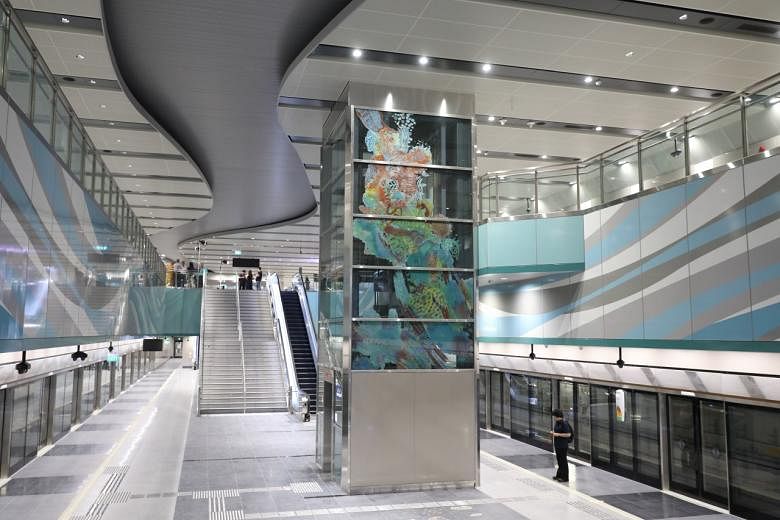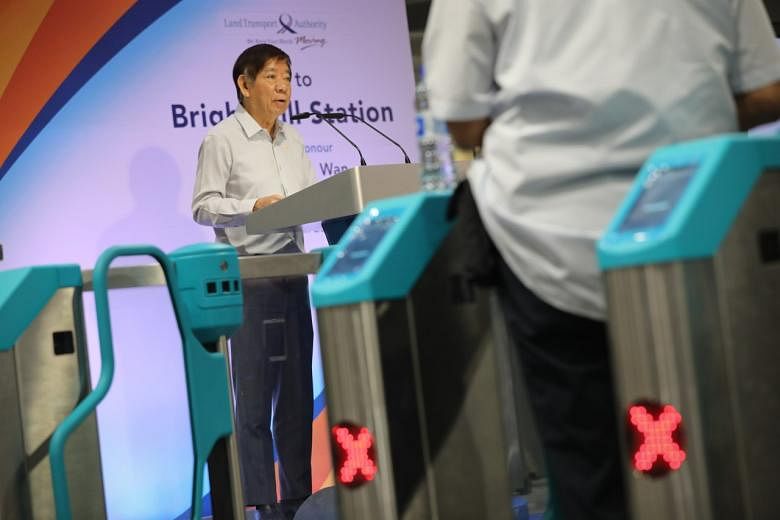SINGAPORE - Stage 2 of the Thomson-East Coast line (TEL) is likely to open after July.
Transport Minister Khaw Boon Wan said on Monday (March 23) that testing of the six-station stretch will be carried out from April to July.
Speaking during a visit to the Bright Hill MRT station, Mr Khaw said Stage 1 will close early and open later on weekends from April to July. This is to facilitate testing of Stage 2, which comprises six stations - Springleaf, Lentor, Mayflower, Bright Hill, Upper Thomson and Caldecott.
"This will allow us to run trains through the entire stretch of nine stations, from Woodlands North to Caldecott for thorough integrated testing. It is necessary," he said.
"We did the same for the Downtown Line, which also opened in stages," he added.
In a separate statement, the Land Transport Authority (LTA) and SMRT said services on Stage 1 of the TEL - Woodlands North, Woodlands and Woodlands South stations - will close earlier, at 10pm every Friday, Saturday and Sunday, and start later at 6.30am every Saturday and Sunday, from April 3 to July 26.
TEL Stage 2 will benefit more than 60,000 households near the six new stations.
The minister also said more needs to be done to reduce crowding on public transport in light of the developing Covid-19 pandemic.
He outlined a few steps: One, do not use public transport if you are unwell, as doing so will endanger other commuters. Two, cut down on unnecessary travels during this period. Three, talk softly, if you need to.
"Best, don't talk," he said. "Let fellow commuters have a quiet journey."
Talking increases the chance of droplets - a key means of transmission - being dispersed.
And, lastly, avoid travelling during peak hours. "Here we need employers to help out by supporting staggered working hours, flexi-time and telecommuting. Many have done so," he said.
Mr Khaw also noted that many were working from home, but more could do so. He noted that two-thirds of the Transport Ministry are working from home, and "productivity is not affected". In fact, less commuting time means more time for work, he quipped.
He said with telecommunications connectivity, there is little need for people to gather at an office. "I hope post-pandemic, office life for most will no longer be the same," he said. "This will reduce peak-hour demand and the pressure on us to add more trains and more lines at great cost to taxpayers and commuters."
With the shorter operating hours for the existing Stage 1 TEL stations, LTA and SMRT said that this will double the engineering hours to test the systems and trains.
During the shorter operating hours, they said commuters may use existing public bus services such as 901/M, 169 and 856 to travel in and near Woodlands. They may also use these bus services to transfer to the North-South Line at Woodlands Station.
Upon its planned completion by 2024, the TEL will be Singapore's sixth and longest MRT line, costing $25 billion to build. It will add 32 new stations to the existing rail network, with eight interchange stations in total.
When fully operational, the TEL is expected to initially serve around 500,000 commuters daily, eventually rising to about one million.
- Additional reporting by Clement Yong



